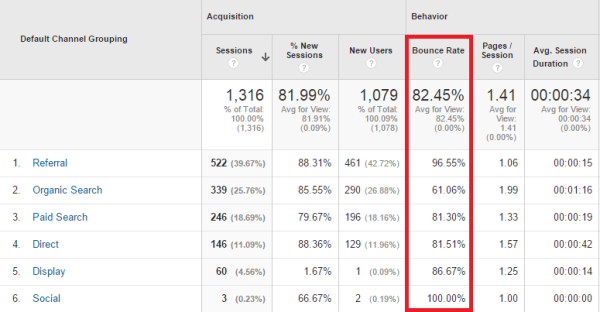April 11, 2016 Joshua Ruskin
7 Ways To Optimize Your WebsitePart 3
- Increase your Conversions

Sales are the lifeblood of your business. Without profit your company will go bankrupt. Therefore if you can implement any changes at all to increase your conversions and conversion rate you should implement them immediately. This includes reducing your load time and bounce rate as well as adding more information about the products and services you sell and getting yourself on as many relevant directories as possible to increase your referral traffic as well as your Google PageRank.
You will also want to make it as easy as possible for your customers to buy. If possible, don’t make them fill out lengthy forms before checkout and only ask for the information you need like name, phone number, and address. Don’t add any extra hurdles for your customers trying to purchase from you like making them register before checkout; ideally you only your customer to be able to buy from you in 3 clicks or less.
Getting rid of all links that don’t serve your purpose can also be very beneficial; you want your customer’s focused on your end goal and to have “tunnel vision” when on your website. External links also usually send users off your website, you do not want that. If you want to have external links it is far better to have those external links open up a new window tab on their browser versus having those links send users off your website completely.
Another really idea to test that I have seen work wonders is to implement a Live Chat option on your website. Sometimes people, especially those who are older, just want to talk to another human being. By implementing a live chat you give users a chance to talk to somebody if they want to. Further, by providing live chat you can help pursued people who are on the fence to buy by answering some of their important questions. However, I have found the single best way to increase conversion rate is often lowering your load time.
- Reduce your Load TimeHaving a long load time for your website greater hinders your sales and business credibility. As I mentioned earlier 57% of mobile customers will abandon your website if it takes more than 3 seconds to load. According to Jupiter Research in 2006 desktop users expected the website to load in less than 4 seconds, nowadays they expect websites to load in less than 2 seconds. Amazon goes even further in depth saying every 100 milliseconds decreases your sales by 1%. So if you don’t think shaving a couple of seconds, or milliseconds from you load time, won’t make a difference think again!

Because load time is so important to user-experience Google has been factoring website load speed into their algorithms to determine web ranking. If you want your website to rank well, customers to be happy, and get more sales with your website you need to optimize your website to have quick load times. There are many reasons why your website could be loading slowly, you may have a slow server, have flash on your website, you might have too much dynamic content, your images might be too large or have unnecessarily high resolution, your website might not be compressed, or have too much data.
Some solutions you can take are use JPEG images instead of PNG images, have your website compressed, reduce your dynamic content, don’t use a lot of CSS, remove bulky code when possible, use less external embedded media, stop using Flash to play videos (Flash is also almost always incompatible with mobile devices), update your hosting plan, and get a dedicated server. Google has a free tool to help you analyze how well your website loads: https://developers.google.com/speed/pagespeed/insights. Bottom line is having a fast loading website is going to be more beneficial to your business than almost any of these complex add-ons you might be implementing.
Every day websites are getting bigger and more complex. Although many people think that these add-ons are beneficial they often distract clients from the “call-to-action”. Websites, especially webpages that need to load on mobile devices, should be simplified to give users easily digestible bits of information and not overwhelm their users with a lot of media. Having your website load fast won’t just increase your ranking and sales but it will also reduce your bounce rate.
- Reduce Your Bounce RateA “bounce” occurs when someone goes to your website and doesn’t interact with your website at all and leaves. Bounce rate represents the percentage of visitors who go to your website and leave your website after only viewing one page. Bounces are a very bad thing but if your website loads quickly and is clean, clear, and responsive people will naturally want to stay on your website.

Beyond just load time you want your website looking its best so when clients click on your website they stay engaged. To accomplish this you don’t just want your website to be easy on the eyes but you also want it to give users a very clear call-to-action. You need to make your website visually appealing as well as easy to use. Also focus on making sure you are bringing the right people to your website and that you meet their expectations. Low bounce rates mean Google wants to display your website more for both their Organic Searches and for their PPC online marketing.






